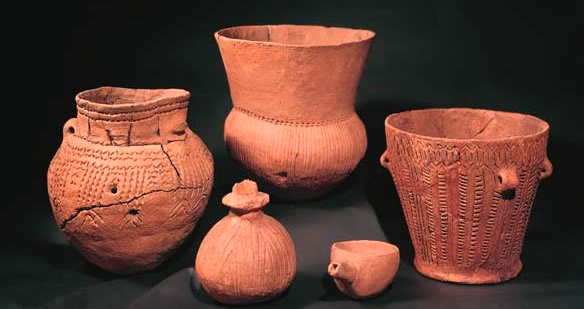I suppose that when the people I once worked for — Nick, Maureen, David and Liz — were traveling together in Italy and noodling the idea of opening a wineshop together their first concern wasn’t what to call it. But the name they finally settled on — Central Bottle Wine + Provisions – is a particularly apt one, it seems to me, in part because of the subtle wordplay involved. The name closely identifies the shop with its physical location — Central Square in Cambridge, Massachusetts — but it also suggests something important to understand about wine: the bottle is central.

The story of how the glass bottle emerged as a near-ideal solution to the problem of how to deliver wine to the consumer in a way both convenient and secure has been told many times – and it’s not my intention to rehash it here. Instead, I’d like reach back to the very beginnings of wine and talk about how we first learned how to contain the fermented fruit of the vine and, in turn, how wine may have taught us the art of containing ourselves.
How far back containers go in pre-history is impossible to say, though no doubt it’s very far indeed. Those early human groups who traveled in small, mobile bands across the landscape are known as hunter-gatherers, after all — and what is gathered must be carried. We can guess that woven baskets must be primeval; and that the skins of animals were early-on sewn into sacks and proto-duffels. That neither of these inventions presented a long-term storage solution wasn’t problematic. The nomadic character of paleolithic life meant that such technology wasn’t really required.
All this changed with the emergence of agriculture sometime after 9000 BCE. Crop- growing as an alternative to hunting and the opportunistic harvesting of wild vegetation eventually made it possible for neolithic people to take the first steps into village life, but only when it became possible to store their cereal surplus safely in solid containers that were impervious to the detrimental influences of air, water, and vermin.
In a sense, the ceramic revolution completed the agricultural revolution by giving its products durability. In so doing, the fired pottery vessel – in all its permutations — became the sine qua non of civilized life.
Wine is by nature more an event than a thing.
Containers do more than store things, though. They give shape to inherently shapeless things – like wine or a heap of wheat berries. In the case of wine, you can go further. Ceramic technology not only constrained stored wine’s physical contours, but shaped its economics, its chemistry, even the behaviors of the people who consumed it. Consider that wine is by nature more an event than a thing. Making it involves interrupting a natural process that starts with a sugary sweet grape and ends with . . . vinegar. Wine is just a stop along the way. The whole art of winemaking lies in interrupting this natural process then holding at bay for as long as possible. Since oxygen speeds the breakdown of wine, the nearly airtight environment provided by a ceramic container extended its life to a degree unattainable with any previous technology.
I say ‘nearly airtight’ because even a tightly sealed pottery pot is permeable. Some oxygen seeps in through its fired clay walls at a rate determined by the quality of the material and workmanship. It’s this steady, measured drip of oxygen that, with time, alters the chemistry of wine in ways we refer to collectively as maturation. Tannins polymerize and smooth out; fruit and acid marry. Once securely buttoned up, pots of wine could be put onboard ship (much the cheapest method of transport) and traded all over the Mediterranean and Black Sea coastlines. Even in the early days of seagoing navigation the trade in wine was extensive. All these are effects of what we might call the containerization of wine, but this briefest of overviews wouldn’t be complete without a reference to what might be the most dramatic effect of all: the invention of moderation.
The most salient feature of wine is that it is made from base material which is supremely perishable. Once ripe and broken, grapes ferment spontaneously by the action of airborne yeasts. There’s little doubt that pre-ceramic peoples understood this and even engaged in primitive, outdoor winemaking (perhaps facilitating would be the appropriate term). But without the means to slow its rapid deterioration and no means of storing it if they could, the only option for enjoying pre-ceramic wine would have been to stage one hurried, epic, annual binge.
In such a situation there’s not only no incentive to exercise self-control – in fact, it would be madness to do so. Deferring gratification to some date in the future makes no sense when the means of gratification won’t exist in the future. But wine stored in tightly stoppered clay jugs has a future dimension. And with wine’s newly-acquired stability and durability emerged a new set of behaviors to to govern its consumption: one that was measured, moderate, self-disciplined – a new aesthetic consonant with the regularity and security characteristic of village agriculture. Under these conditions, bingeing is no longer a behavior that rewards.
Consuming at a pace that ensured stocks of wine would last to the next harvest clearly does. Containers didn’t just shape wine. They shaped us.